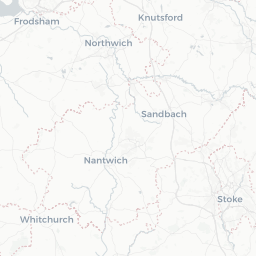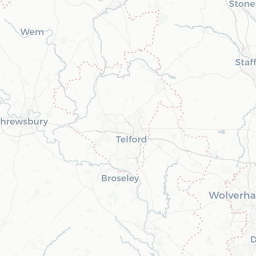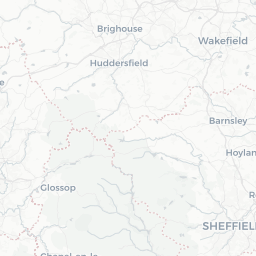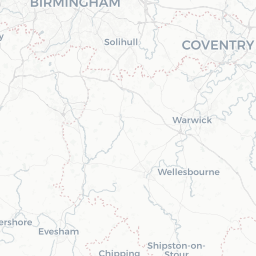NE10 (Gateshead)
Newcastle Upon Tyne (NE10) Postcode Area
Gateshead, located just across the River Tyne from Newcastle, offers a blend of urban living and community spirit. This thriving town is known for iconic attractions like the Sage Gateshead and the Baltic Centre for Contemporary Art. With excellent transport links—including the Metro and bus services—commuting is a breeze. Residents enjoy diverse amenities, including parks, shops, and restaurants, making it ideal for families and young professionals. Plus, the rich cultural scene keeps boredom at bay!
Overview
Gateshead (NE10) postcode district is located in the ceremonial county of Tyne and Wear, and is part of the Newcastle Upon Tyne postal town.
The NE10 postcode area, located in Gateshead, County Durham, is a vibrant community with a population exceeding 120,000. It boasts a diverse range of housing options, with 42.1% of properties being 3-bed houses. The average house price stands at £98,275, significantly lower than the UK average of £288,000. The area is well-connected, with excellent transport links and a strong cultural identity, making it an attractive option for families and individuals alike.
Settlements within NE10 include:
Bill Quay, Felling, Felling Shore, Follingsby, Heworth, Pelaw, St Anthony's, St Peter's, Wardley
















People and Demographics
Demographics
The NE10 postcode is home to a diverse population with an average age of 41.9 years, which is slightly above the UK average of 40.7 years. The area has a predominantly White ethnic background, accounting for 93.8% of the population, while 2.6% identify as Asian and 1.1% as Black or Mixed. The community is characterised by a mix of cultures, including significant Indian, Pakistani, and Bangladeshi influences.
Unemployment
Percentage of people in Newcastle Upon Tyne NE10 who are classed as being unemployed at Census 2021.
An unemployment rate of 5% in Gateshead NE10 is slightly above the UK average of 4.3%, indicating a moderate level of joblessness.
While some residents may face employment challenges, the rate still suggests a functioning local economy. Efforts to boost job opportunities could further enhance community stability and support the area's long-term growth.
Diversity
Percentage of residents in the NE10 postcode region who identify as white.
With 87% of Gateshead NE10residents identifying as White, this postcode has a relatively homogenous population with some ethnic diversity.
While the majority share common backgrounds, the inclusion of different cultures brings varied experiences and enriches the community's social fabric.
Population Growth
Population growth means that the population of Newcastle Upon Tyne NE10 is increasing by 2.5% each year.
Across the UK, (England, Scotland, Northern Ireland and Wales), the average population grown from 2023-2024 is 0.66%.
Children
Are under 18 years old
20% of Newcastle Upon Tyne NE10 are under the age of 18 at the time of the Census 2021.
Gateshead NE10 aligns closely with the UK average of 17.4%. This indicates a balanced mix of families and other household types, with amenities catering to both children and adults.
Retired
Are enjoying retirement
15% of Newcastle Upon Tyne NE10 are retired at the time of the Census 2021.
Gateshead NE10 aligns closely with the UK average of 16%, a mixed community of working-age individuals and retirees. Local amenities are likely to be diverse, and cater to both younger and older residents.
Census 2021 Demographics
Who lives and works in NE10?
Analysing the NE10 population's characteristics, including age distribution and cultural diversity, provides valuable insights into the composition of the community.
Population
Analysing the NE10 population's characteristics, including age distribution and cultural diversity provides valuable insights into the composition of a local community.
Demographics
The NE10 postcode is home to a diverse population with an average age of 41.9 years, which is slightly above the UK average of 40.7 years. The area has a predominantly White ethnic background, accounting for 93.8% of the population, while 2.6% identify as Asian and 1.1% as Black or Mixed. The community is characterised by a mix of cultures, including significant Indian, Pakistani, and Bangladeshi influences.
Population Growth
Population growth means that the population of Newcastle Upon Tyne NE10 is increasing by 2.5% each year.
Across the UK, (England, Scotland, Northern Ireland and Wales), the average population grown from 2023-2024 is 0.66%.
Children
of Newcastle Upon Tyne NE10 are under the age of 18 at the time of the Census 2021.
Retired
of Newcastle Upon Tyne NE10 are retired at the time of the Census 2021.
Gender Ratio
51% female
Gender ratio in census data means the number of males for every 100 females in a population, helping us understand the balance between men and women in a specific area.
Age Distribution
are adults
Age distribution refers to how different age groups are spread within a population, showing the number of people in each age range. This helps understand the population's structure and potential needs.
Age Distribution
"Age Distribution by 5-year bands" in the Census 2021 breaks down the population into groups based on age ranges, each spanning five years (e.g., 0-4, 5-9, 10-14, etc.). This helps to see how many people fall into each age group, providing a clear picture of the age structure in an area.
Living Arrangements
"Living Arrangements" in the Census 2021 refers to people's relationship status and how they live with others. It includes whether someone is married, in a civil partnership, cohabiting as a couple, separated, divorced, or single, and whether they live with a partner, alone, or with others.
Legal Partnership
Legal partnership status of residents in the Newcastle Upon Tyne (NE10) district, offering insights into the diversity of relationship statuses in the area. This dataset classifies residents aged 16+ in England & Wales by their partnership status.
Gender Identity
"Gender Identity" in the Census 2021 refers to how people personally identify their gender, which may or may not align with the sex they were assigned at birth. It includes options like male, female, non-binary, or other identities, reflecting how individuals see themselves.
Postcodes
Dig even deeper into the NE10 postcode:
Click on an postal code below for more information about the area. Each postcode give you a comprehensive overview of the postcode neighbourhood, including address, demographics, crime, transport, amenities and house prices in Newcastle Upon Tyne (NE10).
Word Cloud for NE10
We've trawled social media and the web to discover words that describe the postcode district of NE10:
Nearby Towns & Cities
NE10 Postcode area
The following towns and villages can be found close to Gateshead NE10:
Longbenton
Population 37,070
2.5 miles
Longbenton is a charming town in North Tyneside, known for its leafy residential areas, excellent schools, and easy access to the city of Newcastle, making it the perfect place to settle down and enjoy a peaceful yet convenient lifestyle.
Nearest Postcode Areas:
Wallsend
Population 43,826
2.7 miles
Wallsend is a vibrant town located in Tyne and Wear, boasting a rich industrial heritage, stunning riverside views, and a close-knit community that welcomes newcomers with open arms.
Nearest Postcode Areas:
Gateshead
Population 120,046
2.8 miles
Known for architectural icons including the Angel of the North and The Sage, Gateshead's history can be traced back to 623 AD. The town is home to the MetroCentre, the largest shopping centre in Europe.
Nearest Postcode Areas:
Hebburn
Population 19,148
3.7 miles
Hebburn, located in Tyne and Wear, offers a tight-knit community feel with a rich industrial history, charming local shops and eateries, and easy access to both countryside and city amenities in nearby Newcastle, making it an ideal place to call home for families and young professionals alike.
Nearest Postcode Areas:
Newcastle upon Tyne
Population 268,064
3.9 miles
The most populous city in the North East of England, Newcastle upon Tyne grew as an important centre for the wool trade in the 14th century, and later became a major coal mining area.
Nearest Postcode Areas:
Whickham
Population 16,652
4 miles
Welcome to Whickham, a charming town in Tyne and Wear, known for its quaint village feel, friendly community atmosphere, and stunning views from the iconic Gibside Estate - the perfect place to call home if you crave a mix of countryside and suburban living.
Nearest Postcode Areas:
Sunniside
Population 3,390
4.9 miles
Sunniside, located in Tyne and Wear, offers a peaceful and tight-knit community vibe with easy access to stunning countryside views and a range of local amenities, making it an ideal place for those seeking a laid-back lifestyle in the North East of England.
Nearest Postcode Areas:
Local Authorities
NE10 Postal Town
The NE10 postcode includes the following local authorities:
- Gateshead
- North Tyneside
- South Tyneside
Crime in NE10
How safe is this postcode sector?
NE1 postcode area in Newcastle upon Tyne has seen a fluctuation in crime levels in recent years, with a focus on addressing key hotspots and historical crime issues. The local police force has set priorities to tackle these challenges and ensure the safety of residents in the area.
Key Hotspots
Recent crime statistics show that key hotspots in the NE1 postcode area include areas such as Grainger Town, Quayside, and the city centre. These areas are known for a higher incidence of anti-social behaviour, theft, and violent crimes. Police presence is increased in these hotspots to deter criminal activity and ensure the safety of residents and visitors.
Historical Crime Issues
In the past, the NE1 postcode area has faced historical crime issues such as drug-related crimes, burglary, and vandalism. These issues have been a focus for the local police force in implementing strategies to reduce crime levels and improve community safety. Efforts have been made to address the root causes of crime and work with local communities to prevent criminal activity.
Current Policing Priorities
The local police force in the NE1 postcode area has set priorities to tackle key issues such as reducing anti-social behaviour, addressing drug-related crimes, and improving community engagement. Police officers work closely with local residents, businesses, and community groups to address concerns, gather intelligence, and prevent criminal activity. By focusing on these priorities, the police aim to create a safer environment for all residents in the area.
Sources: Police UK, Chronicle Live.
Education
Highest Rated Schools in NE10
As rated by Ofsted
- Lingey House Primary School
Millford, Gateshead, NE10 8DN
Outstanding - Bede Community Primary School
Old Fold Road, Gateshead, NE10 0DJ
Good - The Drive Community Primary School
The Drive, Gateshead, NE10 0PY
Good - Bill Quay Primary School
Davidson Road, Gateshead, NE10 0UN
Good - White Mere Community Primary School
Sherburn Way, Gateshead, NE10 8BA
Good - Hill Top School
Wealcroft, Gateshead, NE10 8LT
Good - Roman Road Primary School
Leam Lane Estate, Gateshead, NE10 8SA
Good - Wardley Primary School
Keir Hardie Avenue, Gateshead, NE10 8TX
Good - Windy Nook Primary School
Albion Street, Gateshead, NE10 9BD
Good - Falla Park Community Primary School
Falla Park Road, Gateshead, NE10 9HP
Good

Unlock the full power of postcode insights.
Data is meaningless without context. Reveal the stories behind a neighbourhood, and make smarter decisions with data you can trust. Gain unlimited access to detailed statistics, exclusive reports, and essential tools.
PostcodeArea is grateful to our sponsors for their support.






